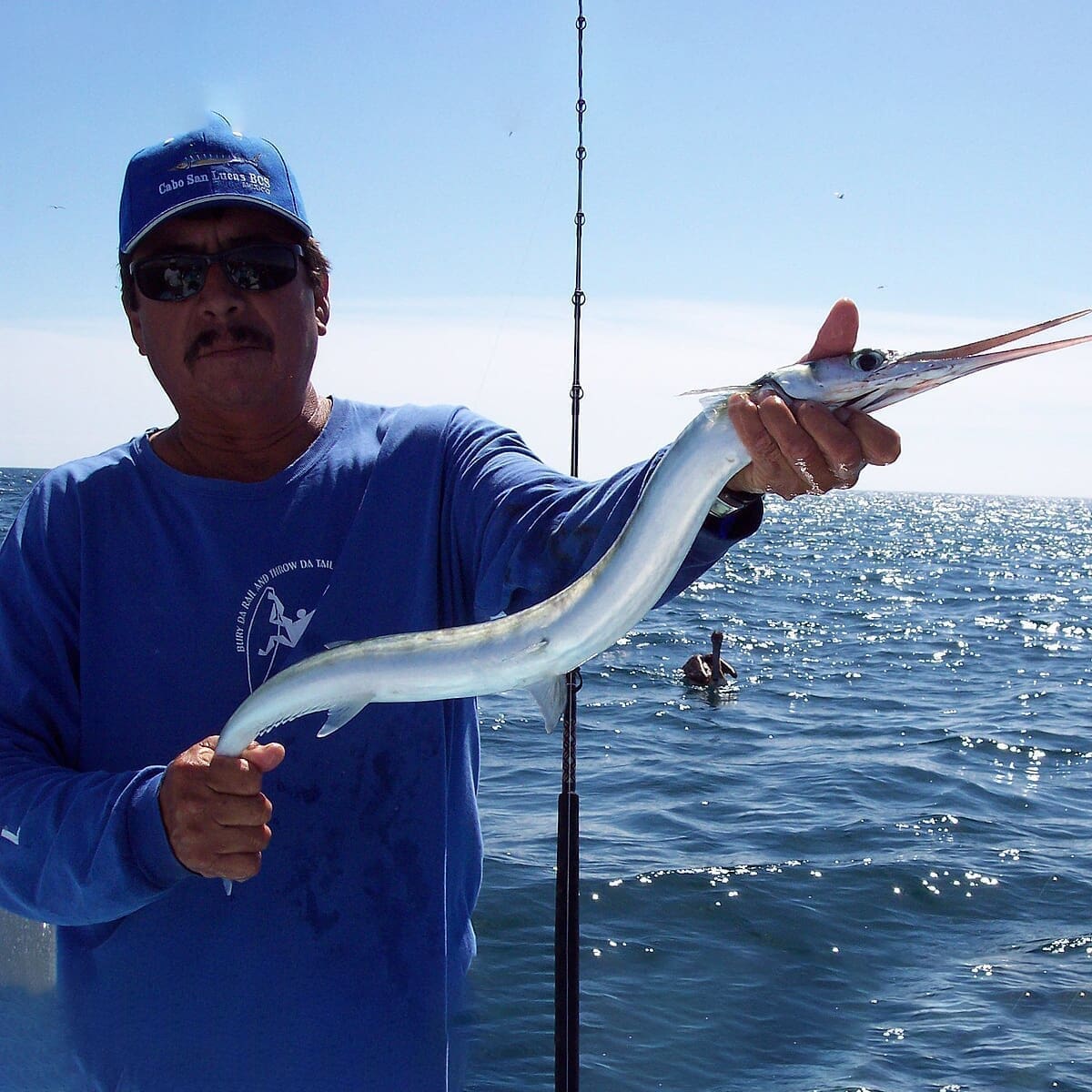Introduction
The Aguja Needlefish, scientifically known as Tylosurus acus, is a marine species belonging to the familial group Belonidae.
Conservation Status
The Aguja Needlefish is categorized as a species of Least Concern under the IUCN Red List, with population fluctuations being subject to minimal human-induced threats and conservation efforts primarily centering on maintaining their natural sea and oceanic habitats.
Statistics
| Statistic | Value |
|---|---|
| Length (Average) | 1.0 m |
| Length (Range) | 0.4 – 1.4 m |
| Weight (Average) | 3 kg |
| Weight (Range) | 1 – 6 kg |
| Average Lifespan | 8 years |
Distribution
The Aguja Needlefish is sporadically distributed throughout the Atlantic Ocean, particularly off the coasts of Europe and Africa, as well as the Mediterranean Sea. No known migration patterns exist for this species, with individuals largely remaining within their respective catchment areas.
Habitats
Being an oceanic creature, the Aguja Needlefish favors the salinity of oceanic and sea waters, living comfortably within depths ranging from near-surface right down to 200 m. A hardy fish, it can withstand a wide range of temperatures from 10 to 28 degrees Celsius.
When and Where to See
Given their widespread distribution, the Aguja Needlefish can be seen throughout the year across different sections of the Atlantic and Mediterranean. They are most active during dawn and dusk.
Best Fishing Locations
Based on reported sightings, the following locations are ideal for angling Aguja Needlefish. These include the North Sea (UK), Adriatic Sea (Italy), Aegean Sea (Greece), Ionian Sea (Albania), Strait of Gibraltar (Spain), Gulf of Cadiz (Spain), Madeira (Portugal), and the Canary Islands (Spain).
How to Catch
The Aguja Needlefish is responsive to lures, particularly silver spoons. Techniques such as trolling and pitch fishing are effective. The most promising time to angle is during dusk and dawn.
Identification Guide
Characterized by their elongated bodies, the Aguja Needlefish has a distinct blue-green color on its backside with a silver underbelly. Their streamlined anatomical structure and unique nose differentiate them from similar species.
Culinary
The Aguja Needlefish has a mild flavor and low-fat profile. It can be cooked in numerous ways including grilling, broiling, and frying. Nutrient-wise, it is a good source of protein.
Additional Information
The Aguja Needlefish is a predatory species, feeding primarily on smaller fish. Known predators include dolphins, sharks, and larger fish species.
References and Further Reading
To learn more about Aguja Needlefish, the following resources are recommended:
FishBase – Aguja Needlefish
European Environment Agency - Aguja Needlefish
IUCN Red List – Aguja Needlefish

